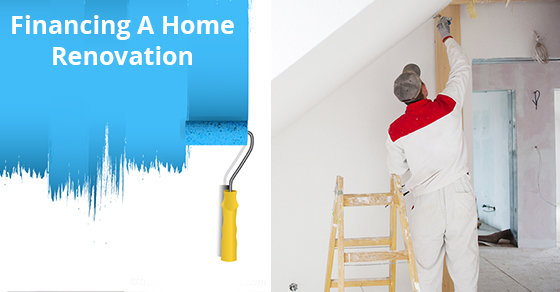Home renovations can definitely be costly. If you’re not careful, you could outspend your entire budget, leaving you to seek the advice of a bankruptcy trustee or having the Mortgage holder repossess their asset because you can’t make the payments. To keep costs for your renovations low, here are five tips for financing your new project:
-
Self-financing: If you are planning on performing smaller renovation projects and perhaps doing the work yourself, you can self-finance. This involves using your own savings or budgeting to pay for the renovations. However, if you are thinking of self-financing, make sure you have the money ready to cover everything at once plus extra in case there are any unforeseen costs, otherwise you may find yourself in serious debt when the work is done.
-
HELOC: A home equity line of credit is a loan that is secured by your home’s value (equity). HELOCs come with preferred interest rates and can be worth up to 80% of your home’s value and it works like a line of credit and not just a single loan. However, be very careful if you are choosing this option as this can eat away at the equity in your home and if you can’t make the payments on this loan the HELOC holder will likely have the same rights as any mortgage holder. This means if you don’t or can’t make the payments they can attempt to seize and sell your home. This is why it is important to fully understand all of the costs and payments involved and make sure it fits well within your monthly budget.
-
Mortgage refinancing: The general goal of a home renovation is to increase its value and give it an updated look or fix a large problem essential to your comfort within the home. The bank or brokerage firm you hold your mortgage with, appreciates that you’re going to do this and will allow you to refinance your mortgage to fund the renovations. This lets you spread out your mortgage repayment over a longer period of time and you can borrow up to 80% of your home’s value to pay for the renos. Remember to watch the interest rates which could be high at the time you refinance to ensure you are getting a good deal. Again, it is also important to be careful and understand the costs involved and monthly payments required. If you are doing non-essential renovations and you are banking solely on the increase of home value make very sure you can comfortably afford to do so. It is better to have an outdated home then have it sold out from under you because you financed more than you can afford.
-
Personal line of credit: Many people turn to personal lines of credit to finance home renovations. A personal line of credit can be accessed at any time and offers low interest rates. Another bonus of this type of line of credit, is that as you pay off the balance, you can use the money again and again without reapplying. Although the interest rate may be higher than the last two options but it is not, unless you give them permission, tied directly to your home.
-
Credit cards: It is generally not a good idea to use your credit cards to finance a home renovation. Credit card interest rates are high and if you carry the balance for too long, you may be looking at major debt in the future. Only use your credit card to pay for your renovations if you are able to pay it back right away before the balance grows.
If you try any of the five tips, you should be able to avoid unnecessary stress and going way over budget until it is too late. If you are already in over your head and are worried about losing the home you have worked so hard for then it may be time to contact a Licensed Insolvency Trustee to discuss your available options.

